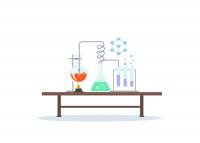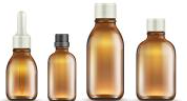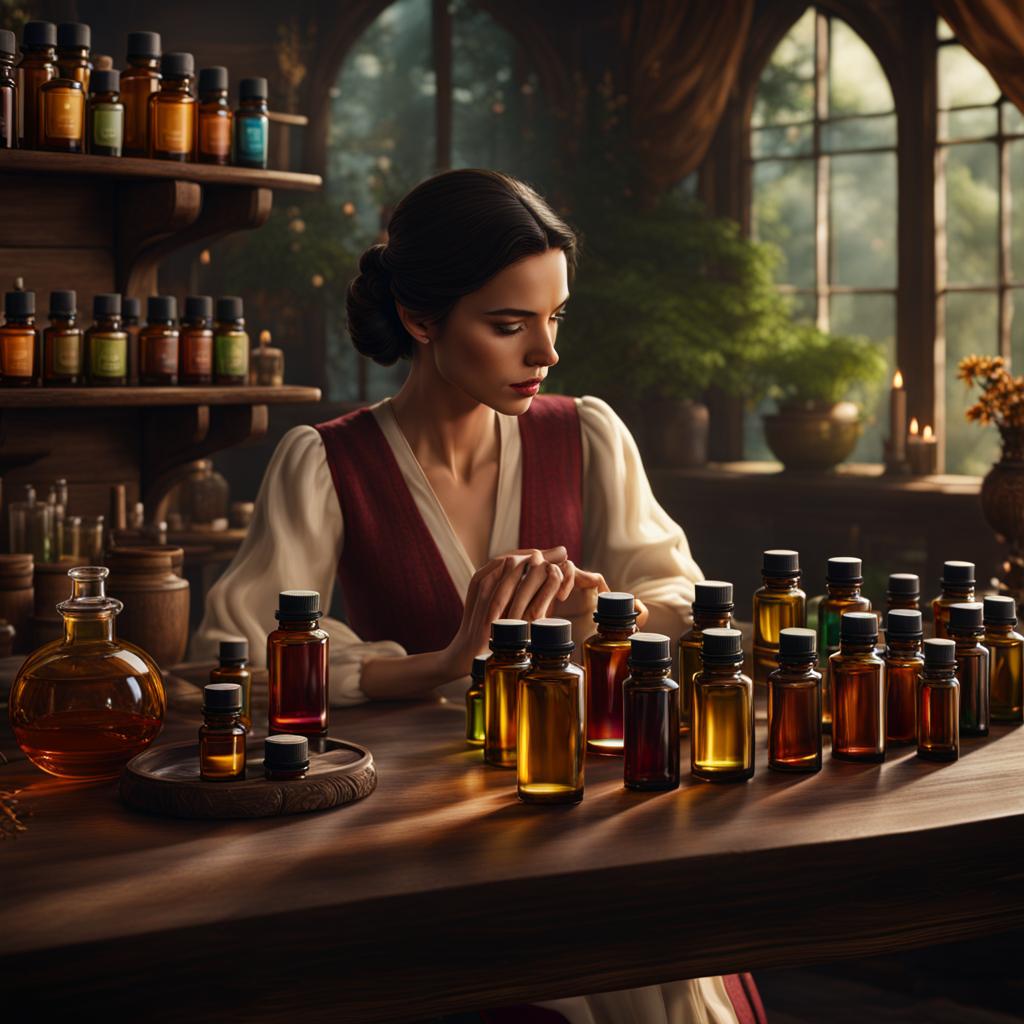Aromatherapy involves using aromatic materials, such as essential oils and aroma compounds, with claims for improving psychological well-being. It may be provided as both complementary therapy and alternative medicine treatments.
Origin
Aromatic oils have been used as medicine and perfume since over 3500 BC, made up of aromatic extracts derived from plant roots, leaves, flowers, seeds or bark that contain concentrated chemicals that help heal both body and mind. Essential oils may be inhaled or directly applied to the skin for use. Bath salts containing essential oils may also be added, or they can be vaporized using an electric diffuser or hot water bottle.
People initially discovered the healing properties of plants through trial and error or instinctive observation. Ancient Egyptians were known for having a deep knowledge of herbs. Their medical texts dating back to pharaonic Egypt mention many ingredients known today as essential oil components such as flowers, fruit, roots, seeds, berries, leaves, and resin.
Modern aromatherapy was revived with the publication of Rene-Maurice Gattefosse’s 1937 book ‘Aromatherapie’. Gattefosse is widely credited with discovering lavender’s healing powers when, following an accidental burn injury in a laboratory environment, he plunged his hand into a vat of lavender oil for healing purposes, and observed it quickly healing without blistering or scarring.
He then used these oils in military hospitals during wartime to treat wounded soldiers, leading him to become known as the founder of modern aromatherapy. Jean Valnet and Marguerite Maury also pioneered aromatherapy by writing books on its subject matter.
Aromatherapy has rapidly grown increasingly popular over the years and more nurses, beauticians, doctors and other health care professionals are turning to it as an all-natural, drug-free alternative to modern medicine. Essential oil massage therapy offers a wonderful way to relax body, mind and spirit. Inhalation helps relieve stress, irritability and anxiety, while massage relaxes muscles and improves circulation.

Uses
Essential oil scents stimulate the olfactory system, sending signals directly to the brain. Aromatherapy has been found to effectively alleviate symptoms associated with stress, anxiety and depression. These oils may promote sleep and calmness relieve headaches, and even ease menopause symptoms like hot flashes. People use aromatherapy for various reasons including improving their mood, relaxation and self-esteem, or overall well-being.
Over 2,500 years ago, Hippocrates and other ancient philosophers suggested aromatic baths as an effective treatment for tuberculosis, infected wounds and respiratory infections. Later in the 1800s, researchers began testing plant extracts in laboratories before publishing their findings in medical journals.
Today, numerous natural products are sold as “aromatherapy” such as lotions, inhalers, diffusers and candles. However, there is no standard evaluation process for these products. Therefore, the National Center for Complementary and Integrative Health (NCCIH) suggests consulting a trained aromatherapist before embarking on this therapy. Their experts can assist in choosing an oil suitable to you and determine the best uses and applications.
Aromatherapy is often utilized by cancer patients as an additional therapy alongside treatments like radiation, chemotherapy or surgery. Aromatherapy massages may even be provided free of charge in cancer clinics and hospitals to alleviate fatigue and stress, and promote relaxation.
There are certain essential oils that should be avoided during pregnancy, such as hyssop and spike lavender, as well as those who have high blood pressure or history of seizures. Aromatherapy may interact with prescription medication, so this is why some practitioners may ask about your use of alternative therapies.

Techniques
Aromatherapy involves using plant extracts in the form of essential oils to promote physical and emotional well-being, through applying it topically, inhaling it or adding it to bathwater. Aromatherapists combine knowledge about how different oils affect both mind and body, in creating beneficial blends to maximize benefits for their patients. They utilize therapeutic essential oils to generate positive emotional and physiological reactions in patients, such as reducing stress or anxiety or improving sleep patterns.
Aromatherapy typically works by placing diluted essential oils in a diffuser or other device which gradually releases them into the air, or adding them to a warm bath or compress. From there, their vapors or oils can either be breathed in through nasal and oral passageways, or they may travel through skin pores into bloodstream and reach all parts of body.
Massage is a widely practiced application of essential oil therapy. An aromatherapy massage involves mixing essential oils with base or carrier oils in order to avoid skin irritation, whether that be performed by a licensed massage therapist or self-administering, using only their hands to apply oils to their bodies.
Aromatherapy should not be practiced on children or pregnant women, due to essential oils being highly concentrated and potentially harmful when consumed internally or applied directly onto skin. To ensure safety during aromatherapy treatments, it’s wise to have an experienced practitioner administer your treatments.
Nurses can incorporate aromatherapy into their symptom management practices by identifying an appropriate symptom and selecting essential oils likely to treat it effectively. They should then assess preoutcome and postoutcome measurements in order to measure effectiveness. If their outcome results in reduced symptoms, nurses must record this change and include it into their plan of care.
Essential Oil Diffuser
An essential oil diffuser is a device that uses warm air to disperse essential oils into the room. They offer a safe alternative to candles or incense, and help create an ambience of relaxation in any setting, be it home or office. They come with either reed or diffuser pads, and come in various sizes to suit different size rooms.
All of these devices work on the same fundamental principle, evaporation. Just as nature’s moisture turns to vapor due to heat, essential oil diffusers use this process to disseminate their scent into the air as quickly as possible.
Ultrasonic diffusers plug directly into a standard electrical outlet and use a ceramic disc to vibrate oils into tiny particles that blend with water, for dispersion as an aromatic mist into the air. They’re one of the easiest and least expensive models available, making this type of oil diffuser one of the most popular choices.
Once your oil is in your diffuser, turn it on and relax! Experiment with different scents until you find ones you enjoy most. Keep in mind though that some oils may require higher concentration than others, so begin slowly before gradually increasing the quantity as needed.
An essential oil diffuser offers numerous health advantages. It can relieve stress, increase your mood, decrease headaches and congestion, and soothe aches and pains for some users. To maximize these advantages, ensure you use high-quality essential oil blends designed specifically for use in an oil diffuser. Quality products are vital for this type of distribution.
This distibution technique may not be ideal for everyone. Chidren, pets, pregnant women, or those who have chronic illness may need to avoid this method. Remember, this method of distribution can have a greater impact than the topical application to a single body.
Safety
Essential oils are powerful gifts from nature that must be handled carefully to avoid adverse reactions or potential toxicity. Otherwise, essential oils may pose health risks or trigger allergic reactions in those with serious health conditions. Essential oils contain substances that could irritate or burn eyes, or mucous membranes. For this reason, only use pure, distilled, or cold pressed essential oils in their purest forms.
Avoid purchasing low-grade aromatherapy oils made of inexpensive cooking oil that contain added chemical fragrance chemicals. Choose essential oils from reputable companies who are open about how they source their products. Check labels for information such as Latin names of plants used, or purity levels of ingredients added. Choose dark colored glass bottles to protect oils from light damage that could over time compromise their quality.
Essential oil safety is especially vital for pregnant women and those living with medical conditions that could be negatively impacted by aromatherapy oils. Pregnant women should always consult their obstetrician before using aromatherapy oils during their pregnancy. Some essential oils, like fennel and clary sage, may stimulate uterine contractions during gestation and must therefore be avoided.
People with high blood pressure should steer clear of stimulating essential oils like rosemary and spike lavender, which act similarly to estrogen and encourage tumor formation. These should also be avoided by those living with breast or ovarian cancer due to these concerns.
Some essential oils may interfere with prescription medications. The best advice is to discuss this with you health care provider to avoid interactions. Diabetics, and those living with chronic conditions, must discuss this in detail with providers before implementation.
Consult a certified aromatherapist about the proper use of essential oils. The National Association for Holistic Aromatherapy has set forth guidelines for aromatherapy certification programs. Inhalation is often employed during aromatherapy treatment, so ensure your practitioner has expertise with this technique.
When embarking on aromatherapy at home, it’s advisable to arm yourself with an aromatherapy reference book, an inhaler or diffuser. Furthermore, familiarize yourself with symptoms of allergic reactions to essential oils. Concentrated oils may cause skin irritation, so study dilution methods and ratios carefully before use.
A good compromise would be to consult an aromatherapist for a tailored aromatherapy plan. As you get more comfortable with essential oil use, you can transition to home therapy.

Frankincense Essential Oil
Frankincense essential oil comes from the resin produced by trees like Boswellia carterii or Boswellia sacara, native to Africa and Arabian Peninsula regions. These trees thrive in harsh desert environments requiring little soil for cultivation. Farmers harvest this resin by making incisions in its bark and allowing it to drip down through tiny droplets. This gives frankincense its distinctive scent and appearance.
Frankincense may offer more than anti-inflammatory benefits; it may also combat cancer cells. Test tube studies have found a combination of frankincense and myrrh oil can kill certain forms of cancer cells. However, this is certainly not a current option, as more research will be required.
Applying frankincense essential oil topically can help minimize scars and marks, while healing wounds. Furthermore, its application acts as an expectorant to ease respiratory ailments like coughing and excessive phlegm build-up.
Frankincense oil is safe for most individuals to use, but its blood thinning properties may cause concern for some potential users!

Lavender Essential Oil
Lavender essential oil boasts a relaxing herbaceous-floral aroma that promotes relaxation and peaceful moods. Studies have proven its efficacy against insomnia and other sleep disorders. Its soothing and sedative properties also ease anxiety. When inhaled or applied directly onto skin, lavender oil’s gentle properties help soothe dry or itchy patches on its own, or when combined with body lotion formulations.
Lavender’s rich history can be traced back thousands of years. The use of lavender can be found in ancient civilizations such as the Egyptians, Greeks, and Romans. The Egyptians employed it for mummification and as a perfume, while the Greeks and Romans used it for bathing, cooking, and healing purposes. The name “lavender” is derived from the Latin word “lavare,” which means “to wash,” highlighting its historical use in bathing rituals.
Lavender essential oils are extracted from the flowers of the lavender plant, scientifically known as Lavandula angustifolia. This perennial shrub is native to the Mediterranean region and is widely cultivated around the world today. The lavender plant thrives in well-drained soil, abundant sunlight, and moderate temperatures, making regions like Provence in France, Bulgaria, and England ideal for its growth.
Peppermint Essential Oil
Peppermint oil can be used in a diffuser or mixed with unscented lotion for an aromatic massage, bath or foot soak. Another use is to repel unwanted bugs and animals in your home, particularly mice and spiders! Its strong scent works especially well at keeping them at bay when placed strategically near the corners of a room.
Peppermint, scientifically known as Mentha piperita, has a rich history dating back to ancient civilizations. The herb’s origins can be traced to Europe and the Middle East, where it was highly regarded for its medicinal properties. The ancient Egyptians, Greeks, and Romans utilized peppermint leaves and oil for various purposes, including soothing digestive ailments, freshening breath, and even adorning religious rituals. Its popularity continued to grow during the Renaissance period when it was introduced to other parts of the world.
Peppermint, with its refreshing aroma and cooling properties, has been cherished for centuries. This versatile herb not only adds flavor to our favorite recipes and teas, but also offers a myriad of health benefits.
Content listed below may contain affiliate links.
